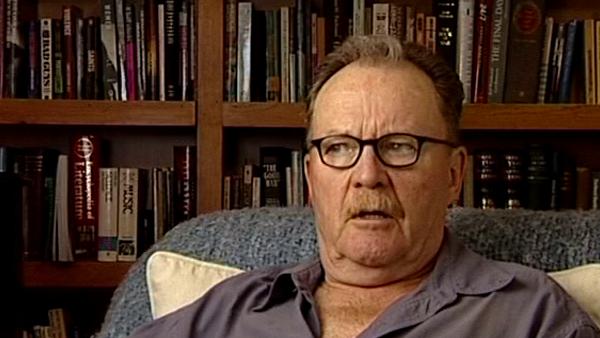NEXT STORY

All The Right Moves: Directing
RELATED STORIES

NEXT STORY

All The Right Moves: Directing
RELATED STORIES


|
Views | Duration | |
|---|---|---|---|
| 51. Raging Bull: Literary references | 243 | 02:05 | |
| 52. Raging Bull: Oscars | 221 | 00:58 | |
| 53. Raging Bull: Using the mechanics of movie-making | 282 | 01:41 | |
| 54. Raging Bull: The parallels with opera | 302 | 04:38 | |
| 55. Personal Best: The subculture of women athletes | 149 | 02:24 | |
| 56. Personal Best: Shooting runners | 119 | 02:01 | |
| 57. Dead Men Don't Wear Plaid: Tricks with light and water | 198 | 04:41 | |
| 58. Dead Men Don't Wear Plaid: Alternative title | 129 | 00:46 | |
| 59. Dead Men Don't Wear Plaid: Matching the footage | 148 | 02:28 | |
| 60. All The Right Moves: Directing | 156 | 01:08 |


As I was saying, I had to match old footage from old movies with the footage that we were shooting, over Steve Martin's shoulder to Lana Turner and then over a stand-in for Lana Turner with blonde hair, to Steve Martin. So... it was before the days of anything seriously digitalizing, or where... where the technology of it was, a) primitive, and b) incredibly expensive, and we didn't know anything about it anyway. So I did it in the most simplest ways. I mean, I just looked and tried to figure out what to do and shot film. And what I had them do was to build a... a dark room on the stage. You know, half the size of this room, or a quarter the size of this room. And I had a slide projector and I measured the light and it was... so that it was very precise – it was 16 foot-lamberts and everything – and then I had slides taken from the old footage and I would stick the slide in and project it and I would study it, and I would say... I mean, this was so primitive, but it was the only way we could think of to do, you know. And I'd say, 'Well, let's see, the light is coming onto her face from here, so that means it must be coming onto his face from there.' And I would sort of figure it out, and kind of paint by numbers. And then I'd go out and figure out... and I would tell the crew what to do and where to put the light and everything. And I'd go back in and study again, and go back and forth and back and forth. That was how we did it. Totally primitive by the numbers, paint by numbers, way. Although the darkroom, which you could lock from the inside, became used on lunch hours and things for all sorts of things. I went in there a couple of times and found... I was kind of amazed at what's going on, because I had... I liked to... and even in those days when I was a good deal younger, I liked to sleep at lunch. And it's almost a most important thing in movies, really. And so I had them bring a mattress and put it on the floor in the darkroom. Well, you can imagine what went on. It was quite extraordinary really, because you could line up... pounding on the... 'I want to go to sleep!' Anyway. But it was very useful extracurricularly, but also very useful and that was how we did it. And that was how we matched the footage – really by very... very primitive, just studying and figuring it out, and trying to match it by eye, and we had no more technology than that.
Michael Chapman (1935-2020), an American cinematographer, had a huge influence on contemporary film-making, working on an impressive array of classic films including 'Taxi Driver', 'Raging Bull', 'The Lost Boys' and 'The Fugitive'.
Title: "Dead Men Don't Wear Plaid": Matching the footage
Listeners: Glen Ade Brown
British Director of Photography and Camera Operator Glen Ade Brown settled in Los Angeles 10 years ago.
He has been working on features, commercials and reality TV. He played an instrumental role in the award-winning ABC Family series "Switched"
and is also a recipient of the Telly and the Cine Golden Eagle awards for Best Cinematography. He was recently signed by the Judy Marks Agency and is now listed in her commercial roster.
Tags: Steve Martin, Lana Turner
Duration: 2 minutes, 28 seconds
Date story recorded: May 2004
Date story went live: 24 January 2008